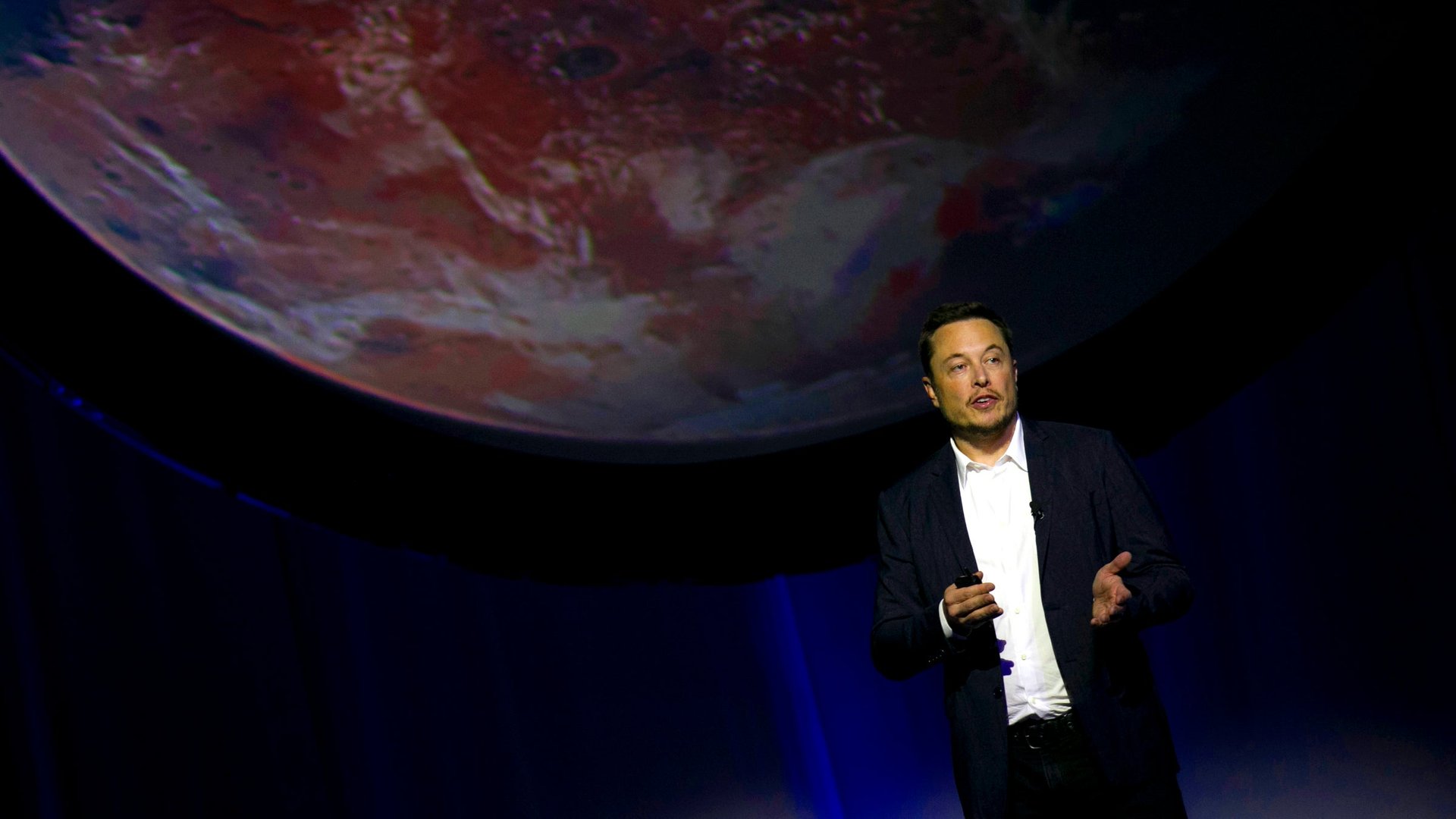NASA says nobody—not even Elon Musk—can terraform Mars
Given recent trends, you may think humans have mastered filling a planet’s atmosphere with carbon dioxide and heating it up.


Given recent trends, you may think humans have mastered filling a planet’s atmosphere with carbon dioxide and heating it up.
But scientists using data collected by NASA spacecraft say using this technique to make Mars habitable for humans is far beyond the technology we have today.
The problem is one of supply: There’s simply not enough carbon dioxide on Mars to create an atmosphere that traps heat and gases close to the planetary surface.
The idea of “terraforming” the red planet is to make it more Earth-like by increasing its temperature so that liquid water could exist, rather than freeze, with a greenhouse atmosphere more conducive to life. The vision has long inspired science-fiction authors and putative space explorers. When, in 2016, Elon Musk’s first presented his vision to go to Mars, few missed that images of the planet grew steadily greener as he unveiled the steps in his plan.
NASA takes a great deal of interest in what kind of chemical compounds might be on Mars. The agency has attempted to measure what exists on the planet with various space probes over the years, particularly the Mars Atmosphere and Volatile Evolution mission (MAVEN), which has been orbiting the planet since 2014.
Bruce Jakosky, a geologist at the University of Colorado-Boulder, leads the MAVEN mission, along with the Northern Arizona University’s Christopher Edwards, has produced a catalogue of the carbon dioxide in Mars’ polar ice caps and surface. They found that even if that carbon dioxide could be released, it would not be enough to raise atmospheric pressure to the point—1 bar—where the temperatures at the poles would be above the melting point of water.
Naturally, Musk was not impressed by reports of this analysis, tweeting that “there’s a massive amount of CO2 on Mars adsorbed into soil that’d be released upon heating. With enough energy via artificial or natural (sun) fusion, you can terraform almost any large, rocky body.”
The scientists, who mention Musk in a dry footnote, anticipated this critique. They note that to release all the carbon dioxide adsorbed into the Martian soil would require heating virtually the entire planet down to 100 meters below the surface, which would take about 10,000 years. And even then, the gradual loss of carbon dioxide into space observed on Mars today suggests that insufficient amounts would accumulate to generate warming.
They do concede that Musk’s dream of nuking the Martian polar ice caps to release carbon dioxide could raise the atmospheric pressure just enough for liquid water to exist on the surface in some areas during the hottest times of day—but they expect it would quickly evaporate. “Thus, liquid water will not be stable on the surface even if the pressure were to double or triple over present-day values,” they write.
There is one potential escape clause for die-hard terraforming advocates: what if there are formations of carbonate-bearing rock deep underground, akin to Earth’s own deeply buried petroleum deposits? If so, that would mean far more carbon dioxide to release into the atmosphere. But even if they exist, they would be difficult to access.
“While there is no formal upper limit on the amount of carbonate deposits—one could always argue that they are preferentially sequestered in locations that we have not or cannot observe—such deposits are both geologically implausible and difficult or impossible to access for terraforming,” the researchers conclude.
Maybe, then, it’s lucky that neither Musk nor anyone is likely to mount a human expedition to Mars for another decade or more. In the meantime, researchers may discover new techniques, or new chemical deposits, to make it a place worth changing.